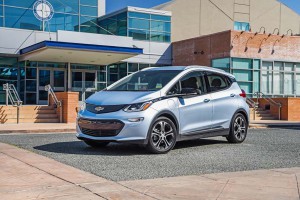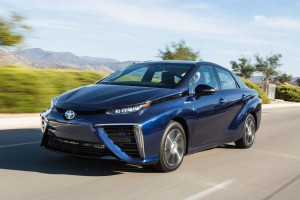California’s Zero-Emission Vehicle program is expected to increase sales of electric, plug-in hybrid and other alternative light-duty vehicles in the United States during the next decade, according to a new report by the U.S. Energy Information Administration.
The ZEV program, which is administered by the California Air Resources Board, affects model year 2018 and later vehicles, requiring automakers to earn credits for alternative-fuel vehicles based on a percentage of their sales in California.
It also extends to nine other states concentrated on the West and East Coast where the program covers the entire New York City Metropolitan Region, which is also one of the stronger markets for new vehicles in the U.S.
Overall the nine other states that have adopted the ZEV program accounted for 28% of total U.S. sales of light duty vehicles in 2015.
California’s ZEV mandates along with similar requirements in the European Union as well as China and Japan are the principle reason that global car makers are steadily investing in electric vehicles.
Moreover, during the past two decades the ZEV mandate has proven to be very difficult to modify or kill politically. Climate change has given added impetus to the mandate despite the complaints from critics of the mandate that the technology required still isn’t ready for prime time.
Nevertheless, electric vehicles dominated the roll out of the Paris Motor Show last week as Volkswagen, Mercedes-Benz and General Motors and other manufacturers showed off EVs.
Volkswagen compared its I.D. electric compact to its historic Beetle and mainstay Golf models and said it was the leading edge of 30 new electric models it plans to put out by 2025, while Mercedes-Benz EQ, a battery-powered crossover SUV concept. The vehicle is meant to illustrate the company’s longer term strategy that connects electric cars with other new technology such as autonomous driving and vehicle sharing.
The ZEV sales requirement is administered through credits that are earned for selling specific types of vehicles, according to the analysis in EIA’s Annual Energy Outlook 2016, which included a look at the ZEV program’s implications for vehicle sales and energy consumption.
(GM, U.S. Army unveil Colorado fuel-cell truck. For more, Click Here.)
The required credits are calculated as a percentage of an automaker’s conventional light-duty vehicle sales. The total percentage requirement starts at 4.5% for model year 2018 sales and increases to 22% for model year 2025 sales.
Full ZEVs must make up 16% of the required credits by model year 2025, which encourages the sale of vehicles powered by electricity or hydrogen fuel cells.
The value of the credits for vehicles sold within each ZEV-approved category depends on certain vehicle characteristics such as the electric driving range. Full zero-emission vehicles such as battery-only electric or hydrogen fuel cell vehicles
Partial credits are awarded to “transitional ZEVs,” such as plug-in hybrid electric or hydrogen internal combustion engine vehicles; “advanced technology partial-ZEVs”, such as gasoline- or diesel-electric hybrid, compressed natural gas, or methanol fuel cell vehicles and what are considered “conventional partial-ZEVs,” which are considered extremely clean conventional vehicles, according to the EIA, which is part of the U.S. Department of Energy.
(Novel Nissan approach could solve problem of hydrogen availability. Click Here for the story.)
Partial and transitional ZEVs have lower credit values than full ZEVs so sales of hybrid electric and plug-in hybrid electric vehicles yield fewer credits than sales of battery-only powered electric vehicles.
The case study in the EIA report projects that sales and energy consumption of these vehicles based on the assumption of compliance with the ZEV program in all 10 states that have adopted the program/
Even though the program is based in California, national sales are affected as more alternative light-duty vehicle models become available as a response to the mandate. Taken together, California and the nine other states that have adopted the program accounted for an estimated 39% of national light-duty electric and plug-in hybrid vehicle sales in 2015.
The AEO2016 Reference case projects that by 2025, full ZEVs and transitional ZEVs will make up 6% of national light-duty vehicle sales and about 2% of the total light-duty vehicle stock.
(Mercedes-Benz set to join ranks of makers offering fuel-cell vehicles. Click Here for the latest.)
With the increased stock, light-duty vehicles are projected to account for about half a percent of national electricity demand by 2025. After full implementation of the ZEV program in 2025, market penetration and energy consumption for electric, plug-in hybrid, hydrogen, and other alternative vehicles is projected to continue to grow through 2040, according to the EIA.


